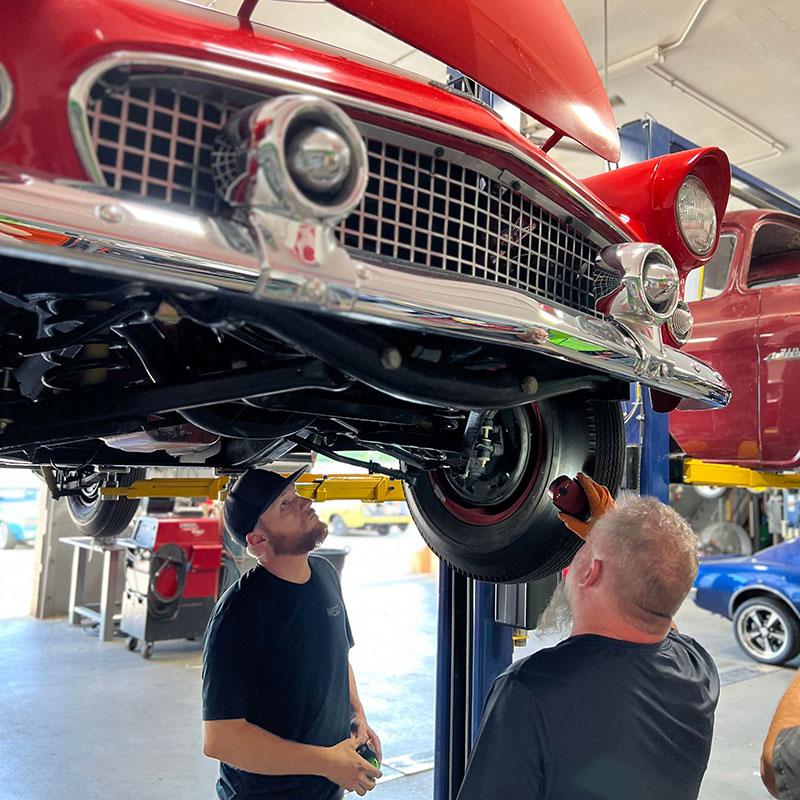So, you have a dream of owning a muscle car and plans to bring this dream to fruition, but you don’t know anything about cars other than what you like. You’ve read 10 hours of forum posts and joined every Facebook group that pertains to the car you are interested in, and you still don’t know. What’s next? Give up, move forward, roll the dice with your lack of knowledge, or hire a professional?
You don’t go to the grocery store to hire a financial advisor, or get surgery from someone with basic first aid experience, so why would you trust strangers on the internet to be honest with you about a big purchase like an iconic American muscle car or truck?
It seems ridiculous to say, but after years of seeing what comes into the shop that was “…just restored” “…bought at Mecum” “…bought at Barrett Jackson” “… bought from a guy I went to high school with that had a cool drag car.” They all have issues and you should have paid someone that you trust to do a pre-purchase inspection. If a seller does not want you to have it inspected then you shouldn’t buy it, PERIOD.
A lot goes into a pre-purchase inspection and first we must establish a set of expectations. Do you want it to be perfect at purchase? Do you want to buy a car that is painted the way you envision it to swap it onto another chassis? Do you want a solid original car to be a perfect starting point for a restoration?
All those cars are different and have a different set of criteria for the inspector. We understand these goals and the requirements necessary to get as close as possible to a “zero” starting point (see Zero Point blog post).
The most expensive thing that does not contribute to the drivability of a classic car is the body and paint. One of the first things we inspect is the body. The body attached to the frame and without its integrity, the quality of the mechanical components do not matter and there are a large percentage of classic cars out there that are rusty beyond belief and covered up with body filler, expanding foam, chicken wire, fiberglass mat and sanded to represent the shape the car is supposed to be then painted with shiny paint just to sell it to someone who doesn’t know the difference.
Guess what? We can spot that a mile away.
Poor body/chassis integrity is the number one item that makes a customer abandon a project. It is not cost-effective and doesn’t give back to the driver like performance upgrades do, but adding performance to a body that is essentially scrap is putting the cart way in front of the horse.
When we perform an inspection especially once our customer owns a vehicle, they tend to say we are negative, well guess what? We don’t care about the good things as much as the bad when they bring in their vehicle.
Most people want to know the negatives and how much it will cost to fix them. So here we are caught in the middle of a customer with buyer’s remorse and a dishonest or unknowing person that sold a turd to our customer to make a buck.
How do we avoid this?
We complete a pre-purchase inspection so we can point out the obvious issues and let the customer make an educated offer and purchase. We’ve taught a lot of new customers about their car whether it is new to them, or they’ve had it since high school. If you are starting out on a classic car adventure, let us help guide you to the correct purchase for your goals. I would rather spend money on three complete inspections than get stuck with a car that needs $30k in paint and body when it already “looks fine”.

